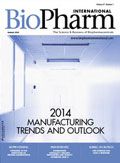Innovation and Market Growth in Brazil
Brazil is the first Latin American country to emerge as a global biopharmaceutical collaborator.

The pharmaceutical market in Brazil has been growing steadily and strongly in the past five years. The country is eying production and innovation, relying on the key support of the government. According to industry associations, biopharmaceutical innovation in Brazil will increase in the future as the country starts facing its challenges and participating globally with local and multinational companies.According to Abifina, Brazil’s Fine Chemicals, Biotechnology, and Specialty Industries Association, Latin American countries are still planting seeds to develop and compete in the global biopharmaceutical market. Brazil, however, plays a key role in the sector with a series of universities and institutes promoting research and development actions, a public health system capable of sustaining part of the local pharmaceutical industry, and a large consumer population at more than 200 million Brazilians.
Market growth in Brazil
“Brazil has definitely been growing steadily over the 10% mark in the past five years and we should continue seeing sales increasing annually by 12-15%,” Nelson Mussolini, executive president of Sindusfarma, told BioPharm International. Sindusfarma is the São Paulo state pharmaceutical products industry association.
According to Mussolini, citing IMS Health figures for the past five years, Brazil’s growth is considered relevant if compared with data for Europe and the US, whose growth levels were around 1%. Mussolini says that the increase is especially due to the fact that the local job market has heated in the past five years and has been transforming the lower classes into active consumers of goods and services. The country’s impact, however, within the biological products market is limited to production and sales and does not necessarily include relevant innovations, according to Reinaldo Guimarães, intellectual property director of Abifina.
“Our increase of the biopharmaceuticals market share is mainly a result of public investments for the government’s health system,” Guimarães told BioPharm International. The government is acting as a main buyer, currently responsible for as much as 25% to 30%, with an estimated participation reaching as much as 50% in the next few years, according to Guimarães. The government is establishing key partnerships with local and multinational, private, and public companies, and is funding local production capacity expansions for public and private companies. Brazil is also controlling the efficacy and safety of pharmaceutical products through market regulation.
According to Guimarães, considering government expenditures with health products, biopharmaceuticals correspond to only 5% in terms of units sold and as much as 40% in terms of sales.
“The government is definitely investing on the development of the local biopharmaceutical sector through partnerships and by obtaining technology,” says Mussolini.
According to Sindusfarma’s executive president, however, companies face challenges to become profitable and still lack large production scales. It seems that Brazil-based companies seek to increase production scales and profitability, while government seeks less dependence on imports and a stronger local market, establishing a strong pharmaceutical partnership intended for growth.
With the economy still under control and regulation equivalent to those of developed nations, challenges now lie within high taxes and costs as well as strict price controls, according to Mussolini. Such issues impact profitability and affect future R&D actions as well as most companies’ long-term survival.
“Brazil competes globally in terms of market share …however, to become a global competitor in terms of new products or better products we still have issues to face,” adds the official. In terms of R&D, for example, challenges are attributed to the country’s lack of technological capacity to produce relevant innovation, says Guimarães.
The Brazilian government through its Health Ministry has the goal of substituting imports for locally produced products by establishing technology transfer deals. Such measures have traditionally been used for vaccines and most recently for synthetic drugs as well as biopharmaceutical products.
Future growth
The global financial crisis, which started in 2008, did not affect Brazil as severely as it affected the US and Europe; therefore, the local pharmaceutical market faced a smaller impact as well. During the past eight years (2003-2011), Brazil went from occupying the tenth position among global pharmaceutical companies to being the sixth largest pharmaceutical market, according to IMS Health. By 2016, a year in which the country will host the Olympic Games, IMS estimates Brazil will occupy the fourth position, with an estimated growth between 1415%, only behind the US, China, and Japan and surpassing the highly established markets of France and Germany.
“I personally believe those estimates to be very optimistic, however, we are indeed heading in the direction of a 12% growth, which would include Brazil in the fifth position …,” says Mussolini.
Nonetheless, “I am sure IMS Health knows exactly what they are saying,” adds Mussolini. “I believe there are no reasons for serious concerns,” concludes Guimarães.
—Hellen Berger is a business news correspondent based in São Paulo, Brazil.

VERAXA and Voyager to Create Combined Business for Advancing Pipeline of Next-Gen Cancer Therapies
April 23rd 2025The proposed business combination would create a publicly traded, clinical-stage biopharmaceutical company that will focus on developing a pipeline of next-generation cancer therapies.
Tokyo University of Science Research Team Explores Improved Delivery of Antisense Oligonucleotides
April 18th 2025Using cholesterol-modified oligonucleotides, the research team aims to improve the delivery of antisense nucleotide-based therapies for treating neurodegenerative diseases and brain cancers.